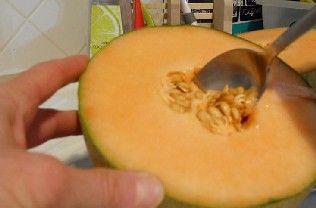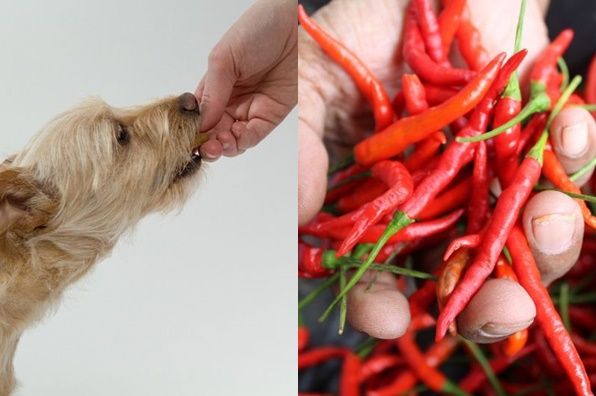Cantaloupe is a yummy fruit that many people enjoy as a healthy snack. But if you’re the type of person who likes to share your food with your dog, you may be wondering, can dogs have cantaloupe?
Can Dogs Have Cantaloupe?
Yes, your dog can eat delicious, juicy cantaloupe. In fact, this fruit is excellent for obese dogs who need a healthy snack to control weight gain. But it would be best if you used caution with the seeds, as they can be a choking hazard for some dogs.
We’re going to discuss everything you need to know about feeding your dog cantaloupe. Including tips on how much they can eat, how to serve it, and any precautions you should know.

Risks of Cantaloupe for Dogs
The inner meat of cantaloupes is entirely safe to feed to your canine. Depending on the breed of your dog, you should cut the pieces into small pieces, roughly one to two inches.
Little breeds might need smaller sized bites. You can feed it to your pet as part of training or put the pieces into a Kong or other toy, so they have to work to get their snack.
Can Dogs Have Cantaloupe Seeds?

However, this fruit does have small seeds. In most cases, they aren’t harmful if your pet swallows them. But it’s best to avoid serving the seeds, as they can pose choking hazards to smaller dogs.
Can Dogs Have Cantaloupe Rind?
You should never feed your dog the outer rind, as this can be harmful. Your pet can experience digestive distress, such as vomiting or diarrhea. It can also be a choking hazard because the rind is tough. Always remove the outer peel.
Never let your pet lick the outer skin, as it can contain bacteria that can lead to your dog getting sick. Keep unopened cantaloupes out of your pet’s reach.

Sugar Content in Cantaloupe
The meat of cantaloupes has a lot of natural sugar, so if your pet is diabetic, you should not feed him this fruit. And feeding your pet too much melon can cause unwanted weight gain. If you’re using cantaloupe as a snack, reduce the number of other treats.
GI Problems
And in some cases, feeding your pet too much cantaloupe can cause GI distress. Symptoms include vomiting, diarrhea, lethargy, swollen belly, or lack of appetite. It’s best to give your pet only a few small bite-sized pieces a day.
What is Cantaloupe?
Cantaloupe is a small round melon, similar to watermelon. On the outside, the cantaloupe has a brown protective shell. Once you cut the fruit open, you access the meat, which is orange, juicy, and has a sweet taste.
This tasty fruit is nutritious and has plenty of health benefits, including being high in fiber, Vitamins B6, A, and C, niacin, folate, and potassium. Furthermore, cantaloupe has low calories and high water content, making it excellent for keeping your dog hydrated.
If you’re looking for a healthy snack to help reduce weight gain and improve digestion, while being high in antioxidants, cantaloupe might be a good fruit option for your pooch.
Before feeding your dog cantaloupe, you have to be sure you pick the right fruit. Many people prefer to choose their melon based on how it smells outside. Your melon should have a sweet, musky smell and a firm, hard feel.
So, Can You Feed Your Dog Cantaloupe?
Cantaloupe is a delicious treat that can have multiple health benefits for canines. When fed in moderation, this sweet fruit can help with weight management and boost your pet’s immune system. However, avoid feeding this fruit to your dog if they have diabetes.
The next time you’re fixing cantaloupe for your snack, feel free to toss a few pieces of the soft, seedless cantaloupe meat to your dog. Just be sure you avoid the seeds and outer rind, as these can cause complications with your pet’s digestion.

Kassidy Shepperd is the editor in chief for Canine-Prime.com. She is is a dog lover/trainer, a freelance writer and a volunteer at many pet rescue and shelter centers. Kassidy is based in Colorado and regularly writes for dog related magazines and blogs.


